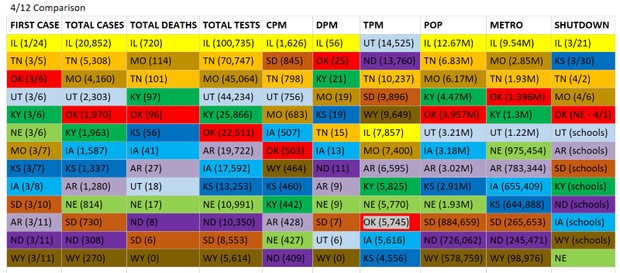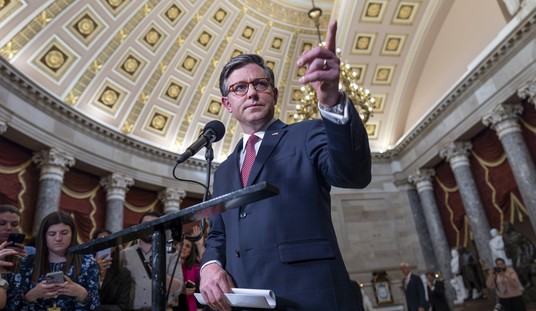
Last month, I wrote about how The Criticism of Those States Who Issued No (or “Late”) Stay-at-Home Orders [Didn’t] Really Hold Water. In it, I ran the COVID-19 numbers (as of mid-April) for Missouri and the eight states surrounding it, plus the remaining states that had not issued stay-at-home orders (Utah, North Dakota, South Dakota, and Wyoming). I put together this handy-dandy chart to track those numbers:

Credit: Susie Moore
Now that it’s been a month (plus), I was curious as to how those same states are faring. This will likely come as no surprise: The numbers are higher in all of them! [/sarc] The real test, of course, is how those states are faring relative to one another (and, for that matter, to the other 37 and D.C.) Particularly given the fact that many of them have already opened back up (or begun the process of doing so.)
For starters, I’ll let the numbers speak for themselves:

Credit: Susie Moore
Not surprisingly, Illinois remains in the top spot, with 92,457 cases total (7,296 cases per million people) and 4,129 deaths total (326 deaths per million people.) They’ve performed the highest total number of tests (561,649), which ranks them fourth in tests per million people. This, despite the fact that Illinois issued the earliest stay-at-home order (of the thirteen states surveyed) and remains the only state of those thirteen which still has the stay-at-home order in place.
Thus, looking at Illinois alone, one might, again, question the efficacy of the stay-at-home order. That said, several of the late (or no) stay-at-home order states have seen a significant jump in cases and deaths. In particular, Iowa and Nebraska both saw sharp upticks in cases and deaths relative to the other states surveyed. Iowa moved up from sixth place to third place in cases-per-million and seventh place to second in deaths-per-million. Nebraska saw an even bigger jump in cases-per-million, moving up from twelfth place to second, though not as big a jump in deaths-per-million (from tenth to seventh.) North Dakota also saw a relative jump in cases per million (from thirteenth (last) place to seventh), but not in deaths-per-million.
By the same token, Oklahoma and Tennessee saw decreases in their relative cases and deaths-per-million. Tennessee had one of the later-issued stay-at-home orders (April 2nd) and lifted its order on the early side (April 29th). Oklahoma never had a formal stay-at-home order issued — non-essential businesses closed April 1st and reopened April 24th. Interestingly, Oklahoma is the only of the thirteen states surveyed that saw a significant relative jump in tests-per-million.
So, what accounts for the significant upticks in Iowa and Nebraska? If it were tied to their stay-at-home orders (or lack thereof), one would expect similar upticks in other states that followed similar tracks but that is not evident. (I should also note that Iowa, though it never had a stay-at-home order, shut down non-essential businesses relatively early (March 17th) and opened them back up on May 1st.) One possibility is the meat-packing plant connection, though obviously, that isn’t the only variable in play.
Basically, what we have is a mixed bag. There appear to be a number of variables here, not least of which is population density. One variable which does not appear to be a determinative factor in terms of infection and death rates, however, is the stay-at-home orders. Don’t tell J.B. Pritzker or Gavin Newsom that, though. (Interesting side note: As of today, California ranks 34th out of cases-per-million and 30th in deaths-per-million, while Illinois ranks 9th and 11th, respectively, even though both states were early-instituters of — and remain wedded to — stay-at-home orders.)















Join the conversation as a VIP Member